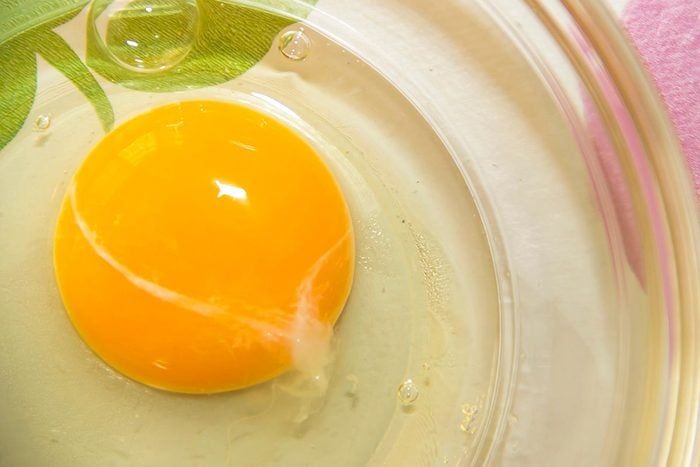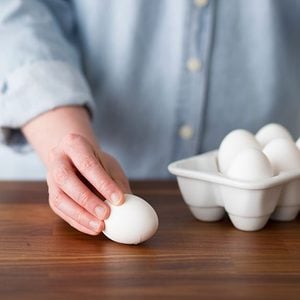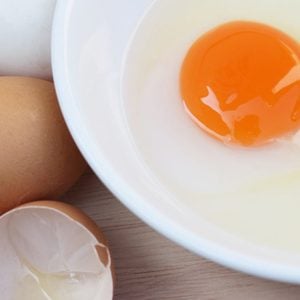What Is That Stringy White Stuff in Eggs? Here’s Your Answer
Updated: Jan. 11, 2024

What is the white stuff in eggs? It looks unnatural, but it's a completely normal part of the egg.
If you’re into breakfast food, chances are you’ve taught yourself how to cook an egg every which way—scrambled, poached, over easy, sunny-side up, hard-boiled, and more. You’ve probably spent a good amount of time eyeing up your breakfast, too, if eggs are plated more than once a week in your kitchen. If you’ve noticed the white stringy thing in egg yolks, you’re not alone, but you shouldn’t be alarmed (same thing applies if you see white stuff on oranges). Here’s why.
What is the white thing in an egg?
That egg only looks like one of the most uncomplicated foods in your fridge. It’s simple enough to prepare, but what goes on inside the shell walls is actually pretty complex and fascinating, and those stringy white things we’re talking about play an important role in an egg’s development.
Before we get into the biology lesson, let’s debunk a few common misconceptions about the string in your egg yolk. No, it’s not a vein or a baby chick’s umbilical cord. It’s actually part of the egg that, although it looks unnatural, is completely normal and necessary for an egg to develop safely. It’s called a chalaza.
There are two chalazae in an egg, one that suspends from the top of the shell and one from the bottom. Essentially, these rope-like structures are made up of protein, and they attach to the yolk to protect it from bumping into the sides of the eggshell. Speaking of eggshells—here’s what it means if you see spots or bumps on your eggs.
Is the white stuff in eggs safe to eat?
Absolutely. Again, the chalaza is a totally normal part of an egg, but if seeing it unsettles your stomach, don’t worry—they tend to disappear after cooking. Even though seeing a white string next to a yellow yolk might throw you off, it’s actually a sign of freshness when the chalaza is visible in a raw egg. If the white string isn’t visible, your eggs may have been sitting in your fridge too long. Also, did you know that overcooking can cause a green hard-boiled egg yolk?
The chalazae shouldn’t interfere with your recipes either unless you’re aiming for the utter smoothness that comes with homemade pudding and custard. In these cases, you can use a strainer to clean up your egg yolks before whipping them up into a silky dessert.
If eggs are a staple in your kitchen, check your fridge—they could be expired!


